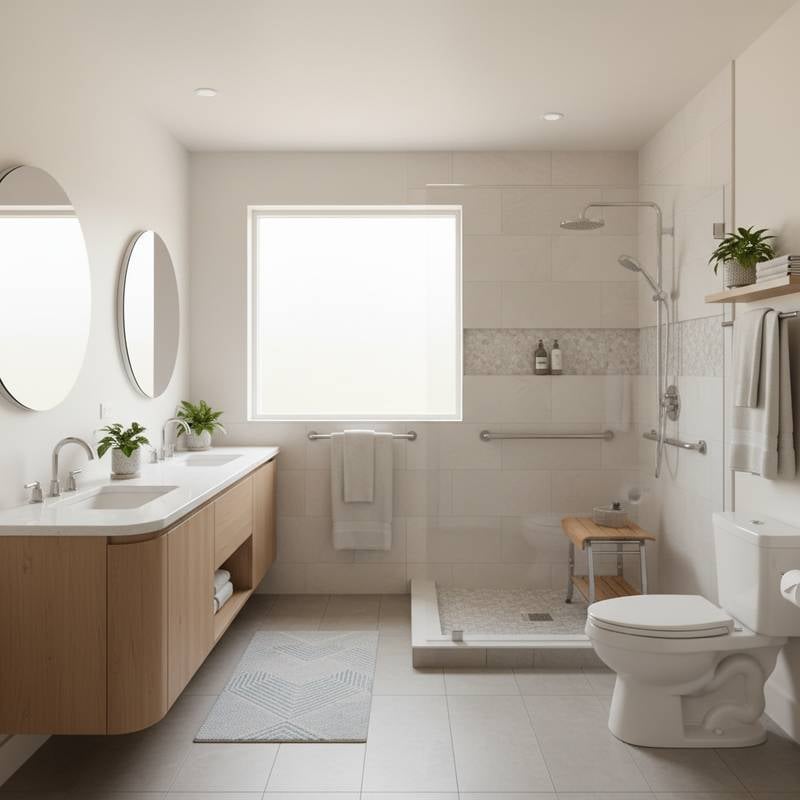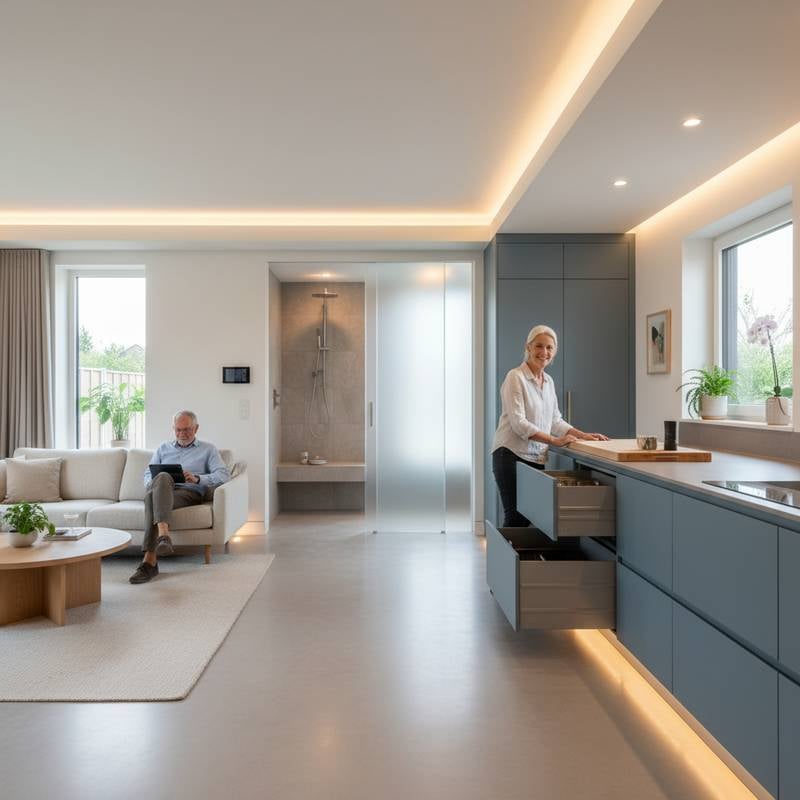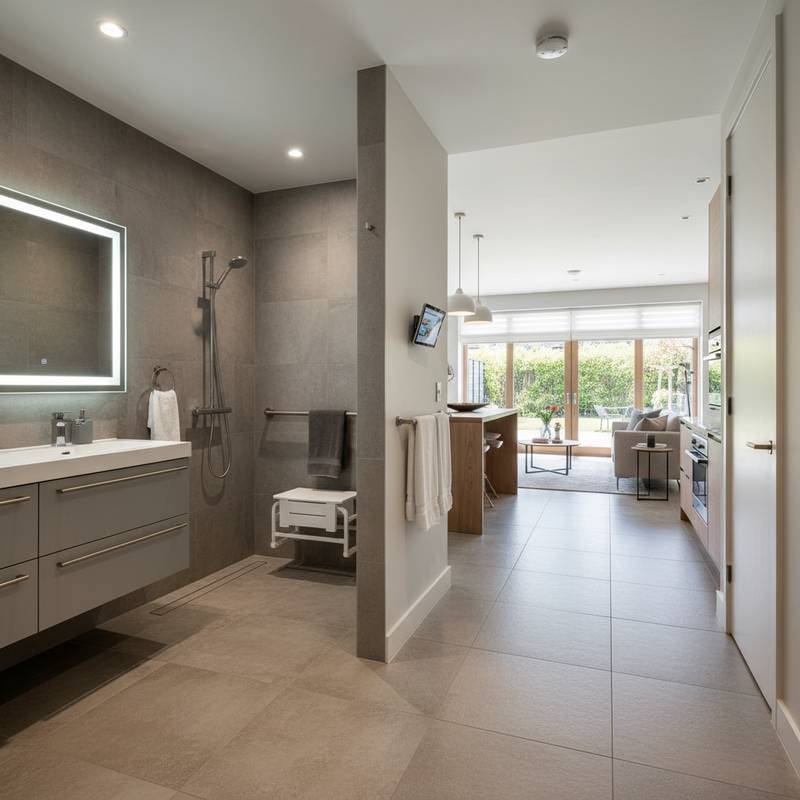Outdoor Living Trends for Fall 2025: Designs & Costs Unveiled
Outdoor living spaces continue to evolve as extensions of the home, adding comfort, functionality, and value. With the shift toward creating usable areas year-round, homeowners are prioritizing outdoor features that combine style with practicality. Fall brings cooler weather and new seasonal needs, making it an ideal time to explore the latest design trends and cost expectations for building or upgrading outdoor living areas.
Quick Cost Summary
The cost of enhancing outdoor living spaces typically ranges from $4,000 to $25,000, with an average project landing near $12,500. Smaller updates like fire pits or upgraded lighting can cost under $3,000, while larger builds such as covered patios, outdoor kitchens, or multi-level decks can reach $50,000 or more.
Key cost drivers include:
- Materials: Stone, pavers, wood, and composite decking influence pricing heavily.
- Labor: Local contractor rates, site preparation, and complexity of installation.
- Features: Kitchens, fireplaces, pergolas, and heating systems significantly increase budgets.
- Utilities: Adding gas, water, or electrical connections raises costs beyond surface-level updates.
Highlights and Key Insights
- Fire features and heated spaces are trending as homeowners prepare for chilly evenings.
- Outdoor kitchens remain high-value investments for frequent entertainers.
- Covered areas with retractable canopies or permanent roofs extend usability deep into the season.
- Sustainable materials and low-maintenance finishes influence both design and long-term cost savings.
- Smart technology integration, such as outdoor lighting and heating controls, adds convenience but also raises costs.
Cost by Size or Type
The scale of the project sets the baseline cost.
- Small projects (under 200 sq. ft.): $4,000 to $10,000. Examples include adding a fire pit, replacing patio pavers, or upgrading lighting.
- Medium projects (200 to 500 sq. ft.): $10,000 to $25,000. This range covers pergolas, partial outdoor kitchens, or composite decking with railing.
- Large projects (over 500 sq. ft.): $25,000 to $50,000+. Full outdoor kitchens, covered patios with fireplaces, or multi-zone living areas fall into this category.
Contractor Costs and DIY Potential
Hiring contractors accounts for 40 to 60 percent of most outdoor living project budgets. For example, a $20,000 outdoor kitchen may include $8,000 to $10,000 in labor. Complex builds with utility hookups or structural roofing should always be handled by licensed professionals.
DIY is a realistic option for projects like:
- Installing pre-made fire pits ($500 to $1,500).
- Assembling pergola kits ($1,500 to $4,000).
- Laying basic patio pavers ($2,000 to $5,000 with materials).
Hiring a pro is recommended for:
- Outdoor kitchens requiring plumbing, gas, or electrical.
- Custom stonework or multi-level decks.
- Covered patios or permanent structures subject to building permits.
DIY can save 20 to 40 percent on labor but increases the risk of mistakes that may require costly corrections later.
Additional Cost Factors
Several elements influence the final budget beyond materials and labor.
- Permits: Expect $200 to $1,500 depending on the structure and local codes.
- Utilities: Running gas lines for fire features can cost $500 to $2,500. Electrical wiring for lighting or heaters averages $1,000 to $3,000. Water lines for sinks or outdoor dishwashers add $1,000 to $2,000.
- Design complexity: Custom stonework, curved decks, or built-in seating increase labor hours and material waste.
- Site preparation: Uneven grading, soil issues, or demolition of existing patios can add $1,000 to $5,000.
Popular Outdoor Living Trends and Costs
Fire Features
Fire pits and fireplaces remain the most requested additions for fall. A simple steel fire bowl costs $300 to $800, while a built-in gas fire pit averages $3,000 to $7,000. Outdoor fireplaces with stone surrounds range from $8,000 to $15,000.
Outdoor Kitchens
Cooking outdoors has shifted from grills to complete kitchens with refrigeration, sinks, and storage. A modest setup with a built-in grill and countertops can cost $7,500 to $15,000. Full kitchens with stone surrounds, multiple appliances, and bar seating often exceed $25,000.
Covered Patios and Pergolas
Covered areas extend seasonal use. A standard pergola kit starts at $2,000, while custom wood or aluminum structures range from $8,000 to $15,000. Adding roofing with shingles or metal panels increases costs to $12,000 to $25,000.
Decking Upgrades
Composite decking continues to replace traditional wood for its durability and low maintenance. Expect $25 to $60 per square foot installed. A 300-square-foot composite deck averages $12,000. Adding railings, stairs, or lighting raises costs further.
Outdoor Heating Systems
Patio heaters cost $200 to $500 each, while mounted infrared heaters run $500 to $1,500. Radiant heating systems installed under flooring can cost $15,000 to $25,000 depending on the area.
Smart Outdoor Technology
Smart lighting, heaters, and audio systems are rising in popularity. A basic system with app-controlled lighting costs $1,500 to $3,000. Full integration with sound systems and security cameras can exceed $10,000.
Ways to Save on Outdoor Living Projects
- Choose modular or prefabricated structures instead of custom builds.
- Use composite decking for long-term savings on maintenance, even if initial costs are higher.
- Phase projects over multiple seasons to spread out expenses.
- Source natural stone locally to reduce shipping costs.
- Install conduit for utilities during initial construction, even if you delay appliance installation.
Return on Investment (ROI)
Outdoor living upgrades typically return 60 to 80 percent of their cost in added home value. High-ROI projects include composite decking, outdoor kitchens, and covered patios. Fire features also contribute to strong resale appeal since buyers value year-round usability.
The long-term value also lies in reduced maintenance when using composite or aluminum materials compared to wood. Energy-efficient lighting and smart controls reduce utility bills, adding further savings.
Cost Methodology
Cost ranges and averages are based on contractor quotes, remodeling cost surveys, and material pricing from suppliers. Regional variations affect labor rates and availability of materials, so local estimates may differ.
DIY vs Hiring a Pro
DIY is manageable for small projects like paver patios, pergola kits, or fire pits that do not require utility connections. These projects save labor costs and allow flexibility in design.
Professional help is strongly recommended for outdoor kitchens, covered patios, and any feature that requires structural support or utility connections. Licensed contractors ensure compliance with building codes and safety standards. The added upfront expense reduces the risk of costly rework later.
FAQs
How much does it cost to build an outdoor kitchen?
Most outdoor kitchens cost $7,500 to $25,000 depending on size, appliances, and materials.
Is DIY decking cheaper than hiring a contractor?
Yes, but only if you have the tools and skills. DIY decking can save 30 to 40 percent, but mistakes may reduce durability.
Do I need a permit for a pergola?
Some regions require permits for structures over a certain size. Check with local building departments before starting.
What adds the most value to outdoor living spaces?
Covered patios, outdoor kitchens, and composite decking provide the strongest return when selling a home.
Can outdoor heaters be installed anywhere?
Portable heaters can be used almost anywhere, but fixed systems require professional installation and clearance from flammable materials.
How do I keep costs down without sacrificing quality?
Choose mid-range materials, phase your project, and prioritize features with the most daily use.
Maintaining Your Investment
Outdoor living projects involve significant investment, so protecting them matters. Seal stonework and pavers every few years to prevent cracking. Clean composite decking regularly to avoid staining. Cover outdoor kitchens or store appliances during harsh weather. Replace or repair minor issues quickly before they escalate into expensive repairs.
Upgrading outdoor spaces not only enhances seasonal enjoyment but also strengthens home value. With careful planning, clear budgeting, and smart material choices, you can create inviting areas that remain functional well beyond the fall season.
By understanding costs, trends, and savings strategies, you can approach your outdoor remodel with confidence and maximize the return on every dollar spent.











